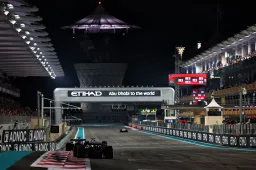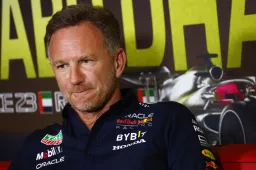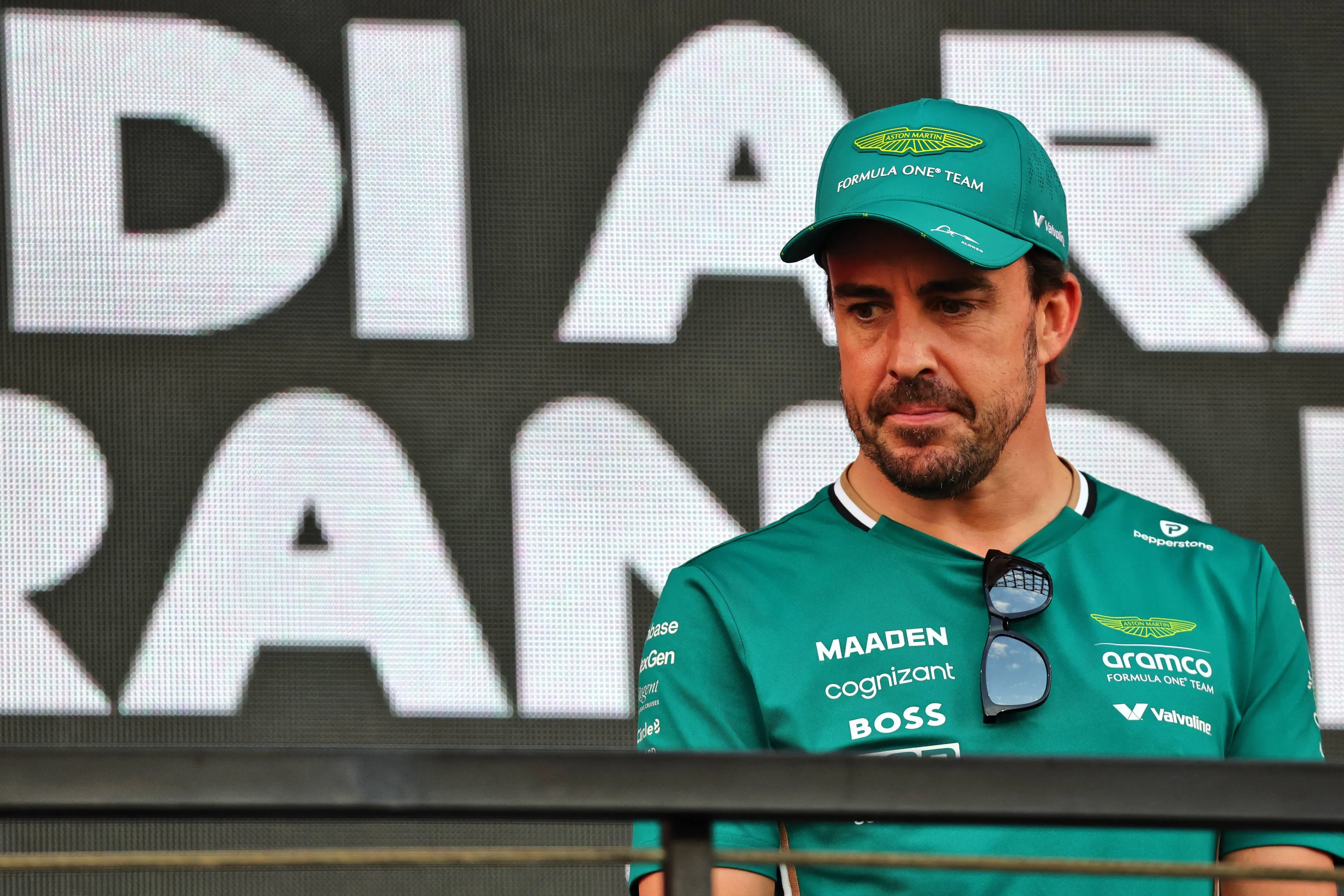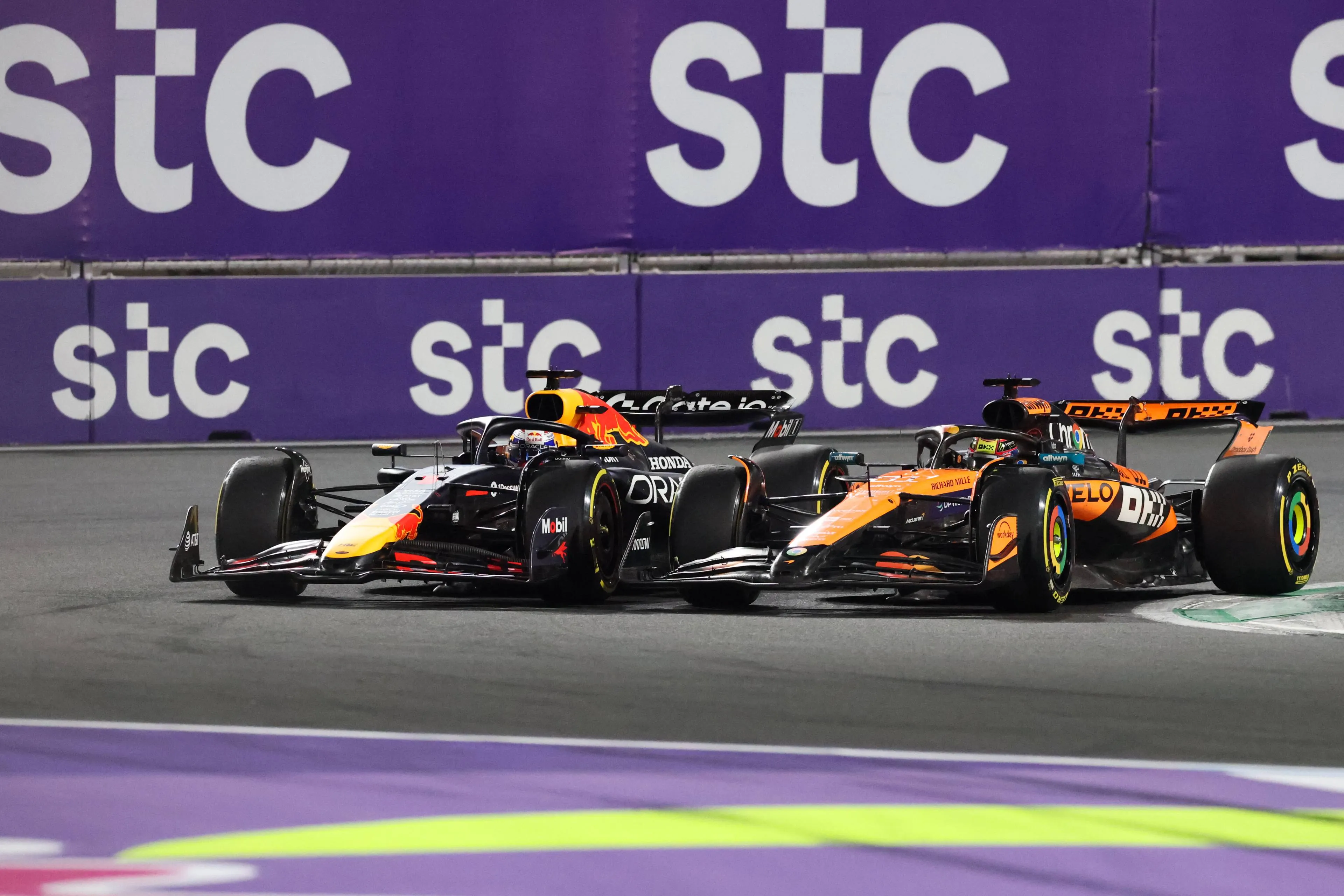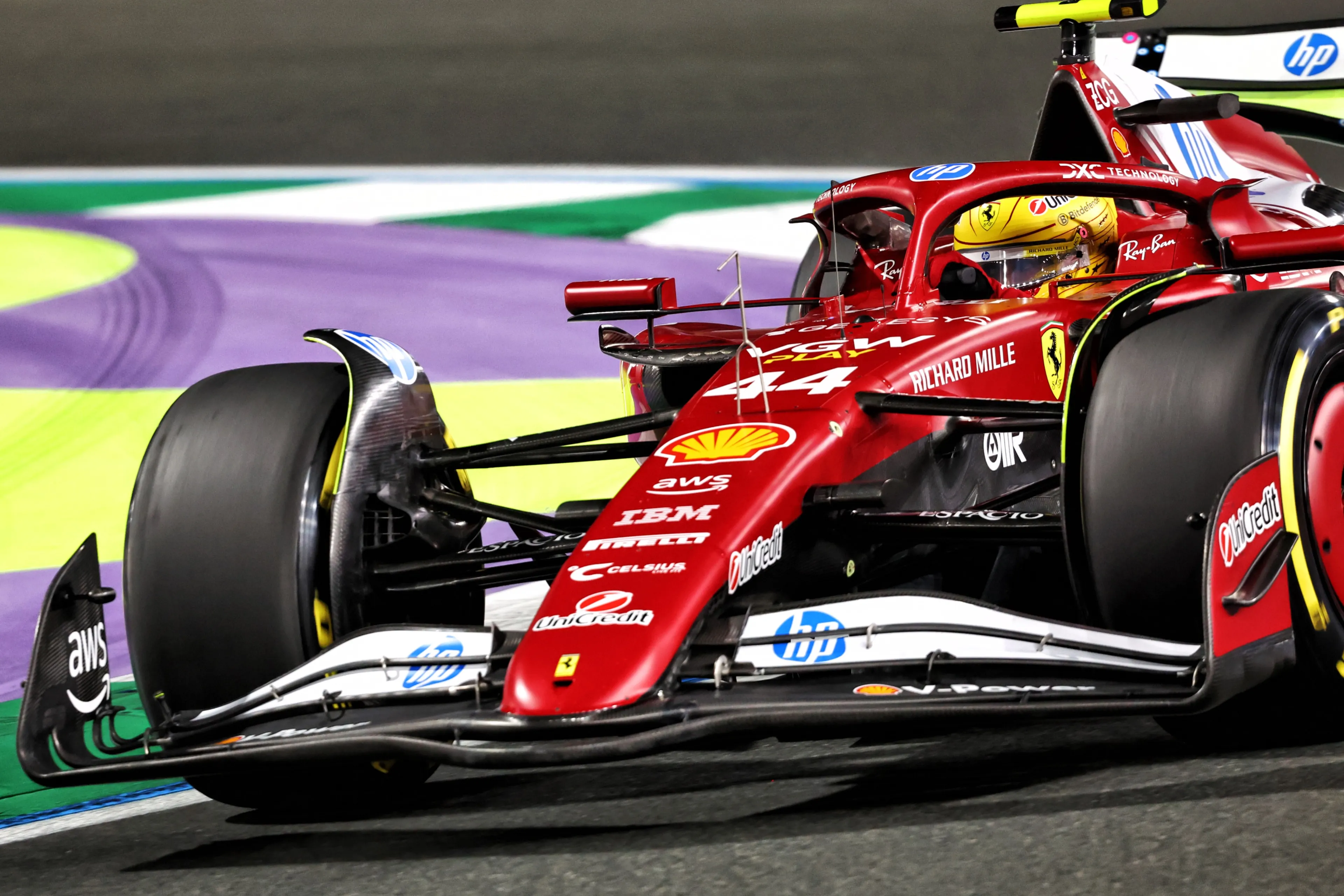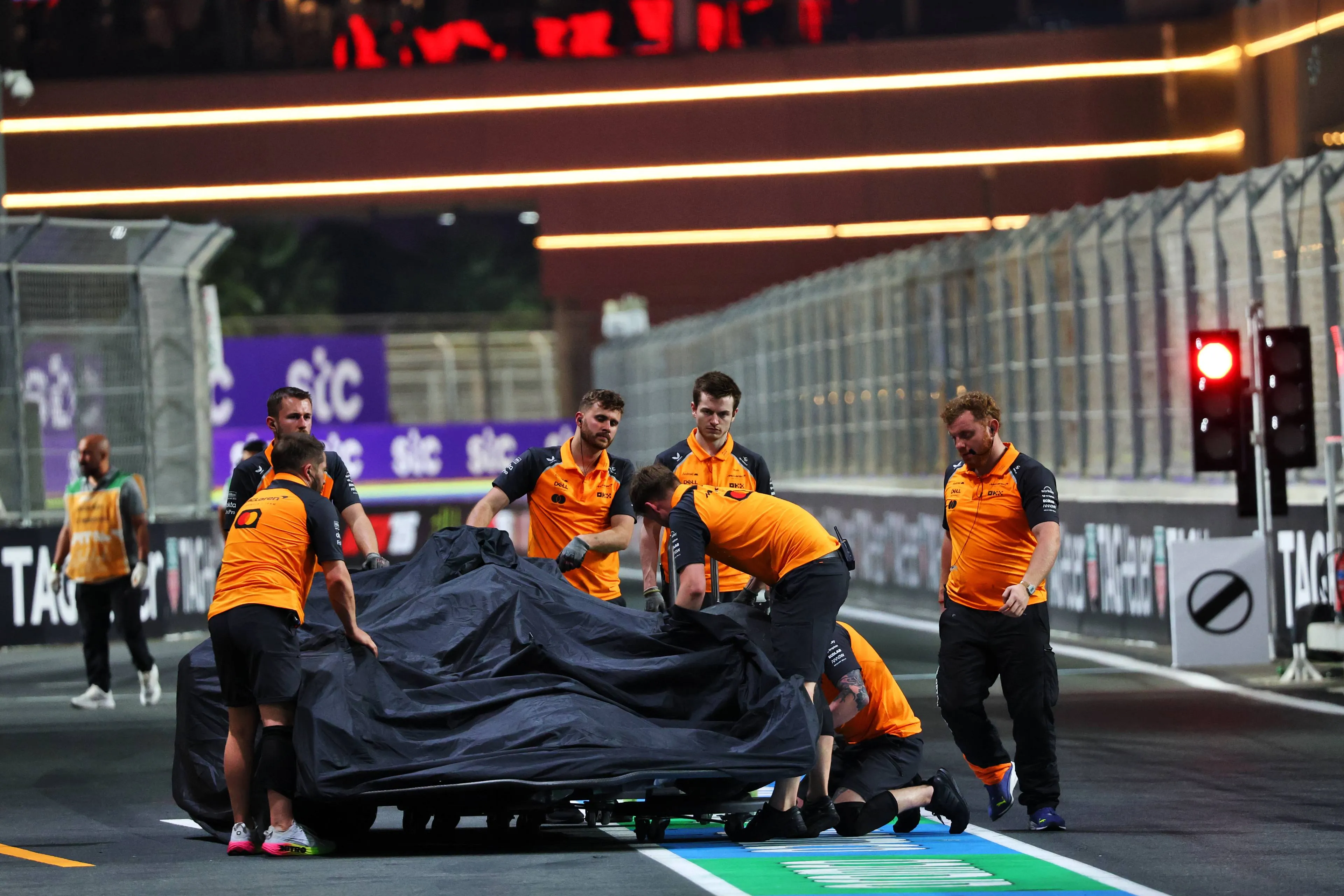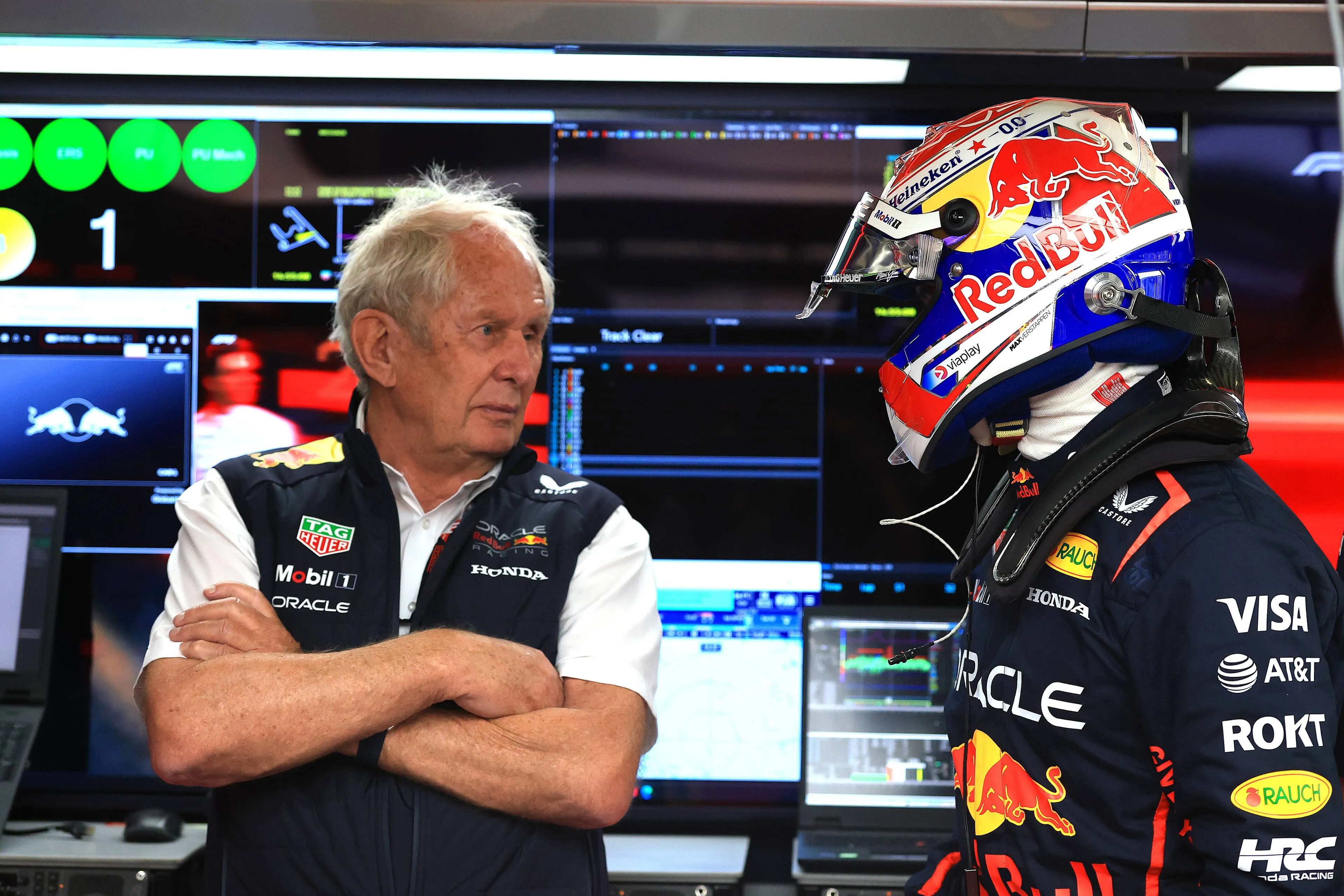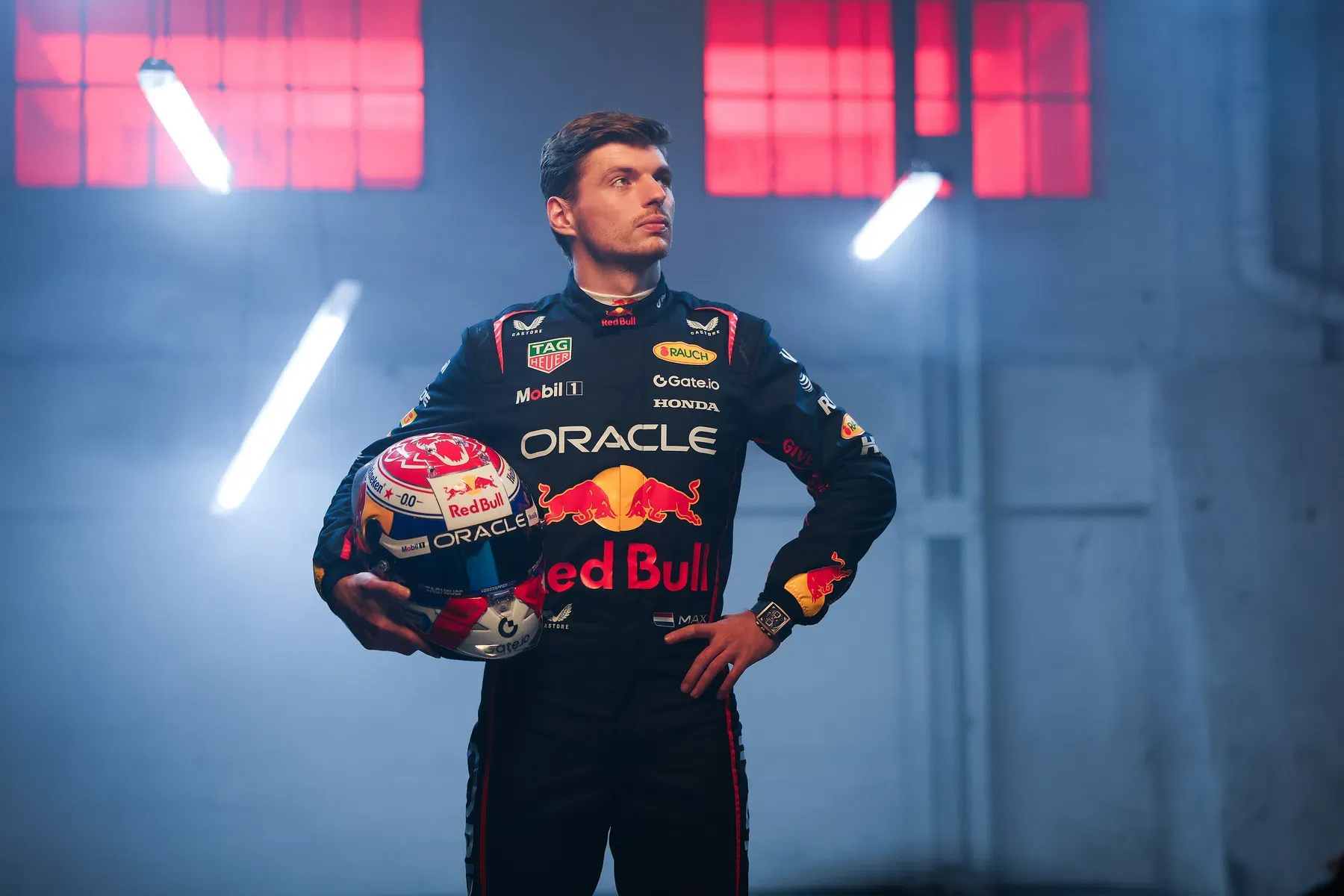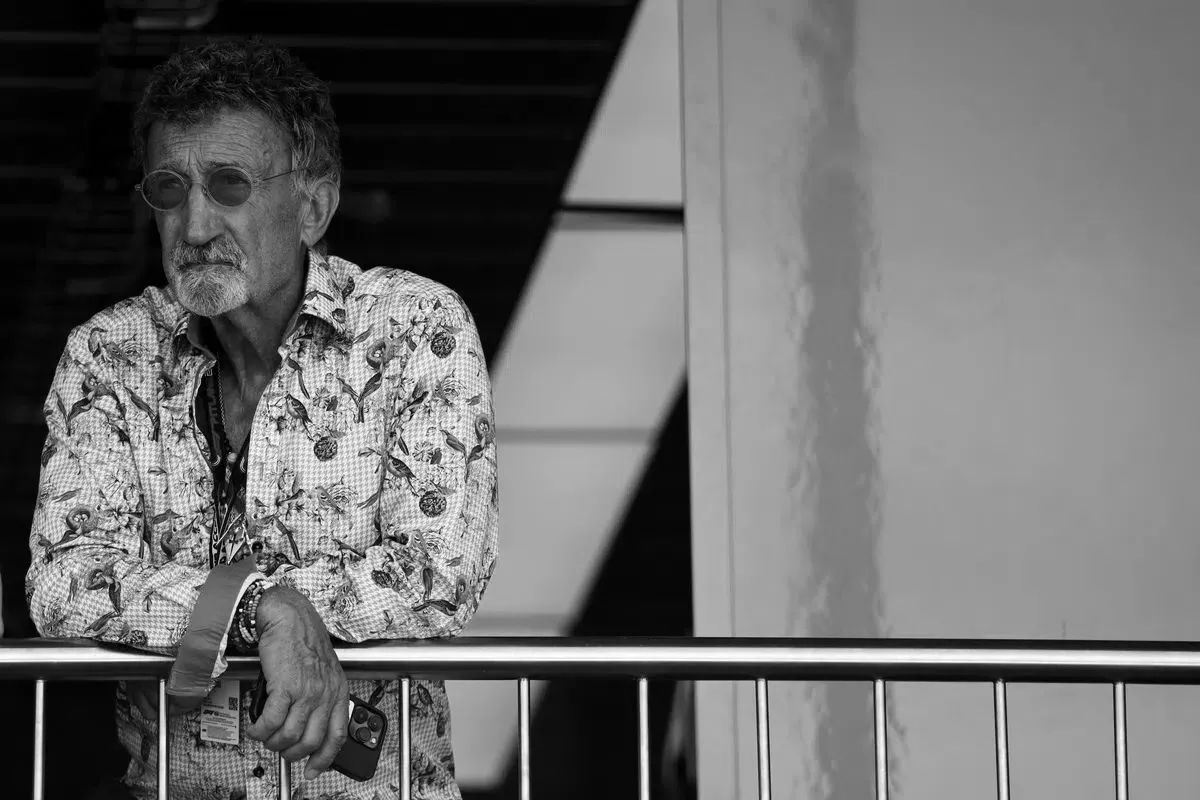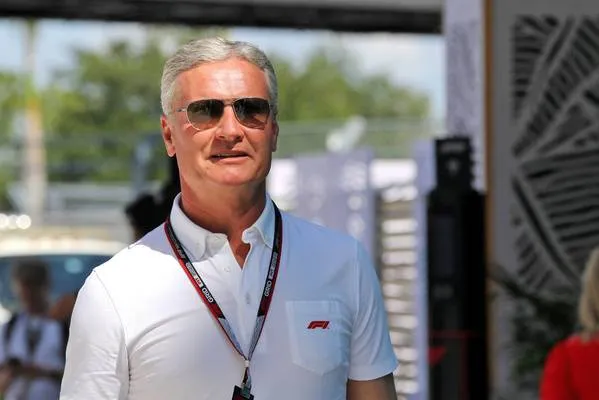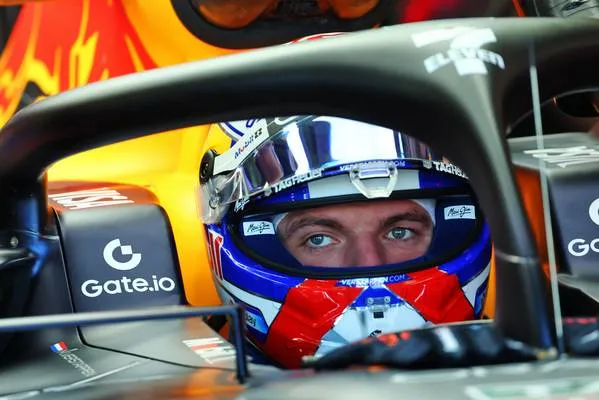F1 Tech Analysis | Why Ferrari and Mercedes are so far behind Red Bull
13:00, 27 Nov 2023
9 Comments
The last race of the 2023 season gave us a well-known script, as Max Verstappen was able to get his 19th victory of the season, ending what has been one of the most dominant seasons in F1 history. However, the race was still kept alive by the battle between Ferrari and Mercedes for second place in the Constructors’ Championship, with both teams trying to get the best set-up for the race to score as many points as possible.
Mercedes eventually got the edge over Ferrari despite Leclerc’s superb race. Let’s have a look at which setup worked better and why.
Perez and Verstappen with different set-ups
Red Bull ran two different front wing configurations for their drivers since FP2 on Friday (during FP1, both cars were driven by the two rookies, Dennis and Hadjar): Sergio Perez used the more loaded version, with the last flap having a different design in the central section, to increase the flow of air towards the central part of the car, and with a higher incidence, to be able to generate more downforce. Furthermore, the penultimate profile had a different attachment to the nose. On the other hand, Verstappen">Max Verstappen used the normal version, with the last flap having a linear shape to the endplate, which generated slightly less downforce than the previous one.

Despite this difference on the front wing, Max Verstappen never seemed quite comfortable with his car during both FP2 and FP3: the main limitation was warming up the fronts on the single lap, and this caused a lot of rear sliding especially in the last sector, where it’s crucial to have a balanced car.
For this reason, the Dutch driver made a series of changes during the last available session before qualifying. In fact, he changed the anti-torsion bar, and the team even made some regulations on the front suspension to help him find the right feeling with the front axle. Red Bull’s engineers managed to be aware of the problem before qualifying and were able to sort it out as the session began.
The feeling from Verstappen was immediately better, as he got a pole with no driver able to match his speed around the Yas Marina Circuit. The World Champion immediately shared his thoughts during the usual post-qualifying interview, underlining the help he received from his race engineer GianPiero Lambiase: “We already tried a lot of things on the car, which didn't really seem to solve the problem. But yeah, I think GP (his race engineer Lambiase, ed.) stayed calm, and he definitely went through a lot of options. And then, with my feedback, he came up with a very good setup for qualifying. So, of course, I'm very, very happy with that. But of course, there's always a bit of a gamble. You're never 100% sure.”

Surprisingly, Perez felt more comfortable with the car for the whole session, complaining a bit of rear sliding, but never seemed to be in such a crisis as Verstappen. However, during Q3, his lap time (which was good enough for P5) was deleted as he exceeded track limits.
During Sunday’s race, things were not going as smoothly as expected on Verstappen’s side, at least during the first stint on the medium tyres: the RB19, in fact, was suffering a bit of graining on the front axle, which was the result of front tyres not working in their optimal window. Leclerc behind never got over 2 seconds before Verstappen stopped, and his lap times were extremely close to the Red Bull driver’s ones. However, as they put the hard tyres on, the situation changed dramatically, with both Perez and Verstappen putting in fastest laps around 0.3/0.4 tenths quicker than Ferrari and Mercedes behind and eventually finished P1 and P4, respectively.
Ferrari stronger than Mercedes during the race
Ferrari and Mercedes seemed to be very close to each other for the whole weekend, not only in terms of positions but also on the technical side. As we have noticed since Thursday, they both adopted a medium downforce setup for this race, but with two different goals. Ferrari wanted to make their car more balanced on both axles, while Mercedes adopted a medium downforce rear wing to reduce drag as much as possible.
From this point of view, Mercedes seemed to have the edge during Friday’s FP2 and Saturday’s FP3. Russell was very quick in the last sector, as the extra downforce generated from the floor and the good mechanical grip found by Mercedes engineers made him unapproachable, even by Red Bull’s Max Verstappen.
Moreover, this strength in the last sector, which is very twisty and puts a lot of lateral and longitudinal stress into the tyres, made people believe there would be no competition with Ferrari during the race. However, both Charles Leclerc and Scuderia Ferrari did a stellar job in setting the car up to be quick both in qualifying and in the race (while the W14 set-up was more for the race). The Monegasque driver got P2 in qualifying, taking advantage of his immense talent and of the SF-23 strengths on the straights and in the slow corners. During Sunday’s race, he managed the tyres carefully, as his pace was matched with Verstappen’s during the first stint on the medium and was quick enough on the hards to keep Russell behind.


Despite their superiority, Ferrari didn’t get P2 in the Constructors’ due to Carlos Sainz's poor race. After the big impact in Friday’s FP2, the Spaniard never seemed confident in his car during the weekend and only qualified P16. To save the front tyres during the race, the team adopted a “pointed” set-up (more downforce on the front axle to take care of the tyres during the race), which didn’t suit Carlos’ driving style. During the race, he was way off from his teammate and never had the pace to return to the points. This disappointing result greatly impacted Ferrari’s hopes to overtake Mercedes in the Constructors’.
Hamilton suffered a lot this weekend compared to his teammate’s performance, but he still got some crucial points to stay in front of Ferrari.
From this point of view, Mercedes and Ferrari have a long way ahead to get to Red Bull in 2024. Both the W14 and the SF-23 have proved to be mediocre cars compared to the dominant RB19, as they had a lot of weaknesses, especially on several circuits and their performance was affected by a lot of factors, such as the layout of the track and the atmospheric conditions they faced every weekend.
For this reason, the goal for both teams must be to build a more versatile car for 2024: a car with a larger working window in all conditions and on all circuits to extract the maximum from their car regardless of the conditions they face. This is clearly easier said than done, but this is what top teams will certainly work on during this winter to be able to fight with Red Bull for at least some victories during the 2024 season.
As Leclerc pointed out during the post-race interview: "On one hand, it is good to finish a season like that. That gives me the confidence that, for next year, hopefully, we know more where we need to set-up our car and where the development needs to be done. On the other hand, there's still a long way to go before getting to the Red Bull pace, especially in terms of race pace. So, on that we are all aware in the team that there's still a lot of work to do."
A disappointing weekend for McLaren
Last but not least, a brief mention to McLaren’s race: since Thursday, the MCL60 was said to be the car which could have been at Max Verstappen’s level, but this last weekend of 2023 was quite disappointing for the Woking team. Since Friday’s FP2, the MCL60 seemed to be working pretty well in the last sector but suffered a lot in the middle one, as both drivers were losing 3/4 tenths to Verstappen on the straights. Their car has always suffered in a straight line compared to their competitors for the whole year, even though the last upgrade in Singapore seemed to have brought them close to the other top teams regarding straight-line speed.
However, Norris and Piastri’s performance during the race was the biggest surprise this weekend. During the second half of this season, we’ve always praised the MCL60 for its ability to babysit the tyres during the race, but this aspect seemed to have disappeared in Abu Dhabi. Both drivers, in fact, never had the pace to fight with Russell and Leclerc in front and had a “lonely race” back in P5 and P6.
With the last race achieved, it’s important to underline the stellar job done by the whole Red Bull team, as they were able to build a pure rocketship and break many records this year. The RB19 has never had a single secret behind its performance, but it was a great car from all aspects, quick both in qualifying and in the race and in different conditions. From this point of view, other teams will have to work quite hard to get them next year, but McLaren’s progress gives hope to all teams willing to compete with Red Bull in 2024 and 2025.
In conclusion to this article, with another year of F1 gone, it’s time now to rest and reset before starting again in a few months with Bahrain tests, hoping for closer and more exciting battles in 2024!
Read more about:
Popular on GPBlog

1
How Christian Horner scored a significant victory over Toto Wolff
771 times read
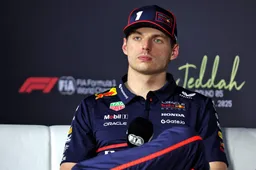
2
Why is the most logical option for Verstappen in '26 never mentioned?
711 times read
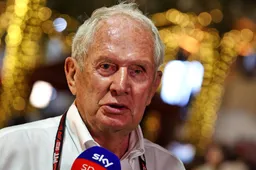
3
This F1 driver left the biggest impression on Marko in 2025 so far: 'His approach is good!'
402 times read

4
The 2026 engine regulations are being overhauled: Here's what changes
399 times read


